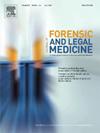The R-I-M-E framework: Origin, application, advantages, disadvantages, and impact on forensic pathology teaching
IF 1.2
4区 医学
Q3 MEDICINE, LEGAL
引用次数: 0
Abstract
The R-I-M-E framework, an acronym for Reporter, Interpreter, Manager, and Educator, is a developmental model designed to evaluate and enhance clinical competence among medical trainees. Introduced by Dr. Louis Pangaro in the 1990s, it has gained widespread acceptance in medical education due to its clarity, structured approach, and applicability across specialties. In the context of forensic pathology - a field that demands precision, analytical reasoning, and interdisciplinary coordination - the R-I-M-E framework offers a promising structure for competency-based education. This article explores the origin, educational application, pedagogical advantages and limitations, and specific impact of the R-I-M-E framework on forensic pathology teaching and training. This narrative review synthesizes existing literature on the R-I-M-E framework and its application within medical education, emphasizing its relevance and adaptability to forensic pathology. The framework's stages were analyzed with illustrative examples specific to forensic competencies. The framework provides a sequential model for learner development, starting from accurate reporting (Reporter) and progressing through data interpretation (Interpreter), decision-making and case management (Manager), to professional contribution through teaching and research (Educator). In forensic pathology education, this approach enables learners to build skills systematically while receiving structured feedback. Despite its strengths in clarity and adaptability, limitations such as rigid progression and subjectivity in evaluation were noted. The R-I-M-E framework significantly enhances forensic pathology education by offering a competency-based, developmental structure that aligns with the cognitive and professional demands of the specialty. It promotes learner accountability, fosters reflective practice, and supports the cultivation of skilled forensic practitioners prepared to meet medico-legal responsibilities.
R-I-M-E框架:起源、应用、优缺点及其对法医病理学教学的影响
R-I-M-E框架是“报告者”、“口译员”、“管理者”和“教育者”的首字母缩略词,是一种旨在评估和提高医学实习生临床能力的发展模型。由Louis Pangaro博士于20世纪90年代引入,由于其清晰,结构化的方法和跨专业的适用性,它在医学教育中获得了广泛的接受。在法医病理学这一要求精确、分析推理和跨学科协调的领域中,R-I-M-E框架为基于能力的教育提供了一个很有前途的结构。本文探讨了R-I-M-E框架的起源、教育应用、教学优势和局限性,以及对法医病理学教学和培训的具体影响。这篇叙述性综述综合了现有的关于R-I-M-E框架及其在医学教育中的应用的文献,强调了其对法医病理学的相关性和适应性。该框架的各个阶段用具体的法医能力的说明性例子进行了分析。该框架为学习者的发展提供了一个顺序的模型,从准确的报告(Reporter)开始,经过数据解释(Interpreter)、决策和案例管理(Manager),再到通过教学和研究(educators)做出专业贡献。在法医病理学教育中,这种方法使学习者能够在接受结构化反馈的同时系统地建立技能。尽管它在明确性和适应性方面具有优势,但也注意到诸如僵化的进度和评价的主观性等限制。R-I-M-E框架通过提供与专业认知和专业需求相一致的基于能力的发展结构,显着增强了法医病理学教育。它促进学习者问责制,促进反思实践,并支持培养熟练的法医从业人员,为履行医疗法律责任做好准备。
本文章由计算机程序翻译,如有差异,请以英文原文为准。
求助全文
约1分钟内获得全文
求助全文
来源期刊

Journal of forensic and legal medicine
MEDICINE, LEGAL-
CiteScore
2.70
自引率
6.70%
发文量
106
审稿时长
57 days
期刊介绍:
The Journal of Forensic and Legal Medicine publishes topical articles on aspects of forensic and legal medicine. Specifically the Journal supports research that explores the medical principles of care and forensic assessment of individuals, whether adult or child, in contact with the judicial system. It is a fully peer-review hybrid journal with a broad international perspective.
The Journal accepts submissions of original research, review articles, and pertinent case studies, editorials, and commentaries in relevant areas of Forensic and Legal Medicine, Context of Practice, and Education and Training.
The Journal adheres to strict publication ethical guidelines, and actively supports a culture of inclusive and representative publication.
 求助内容:
求助内容: 应助结果提醒方式:
应助结果提醒方式:


